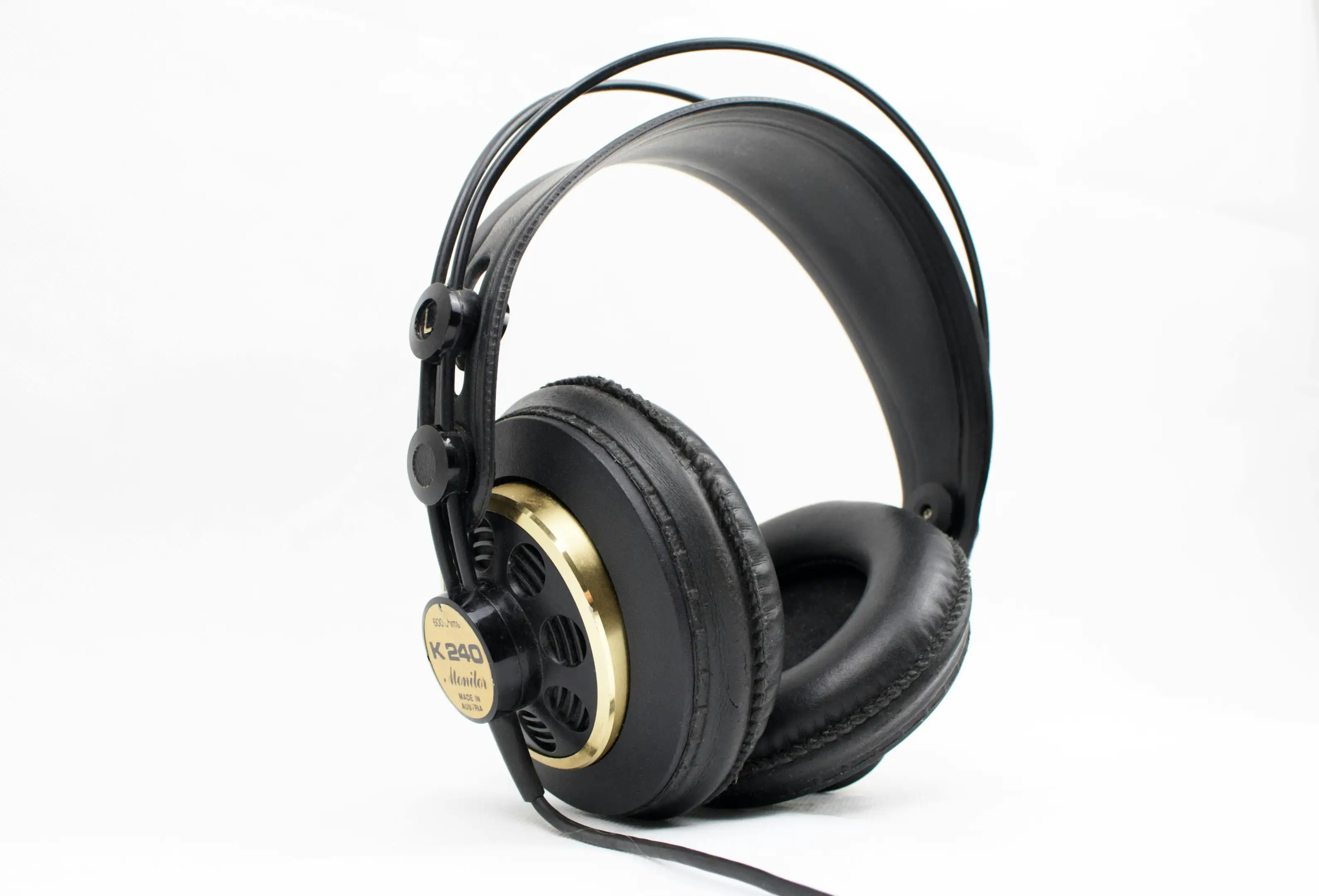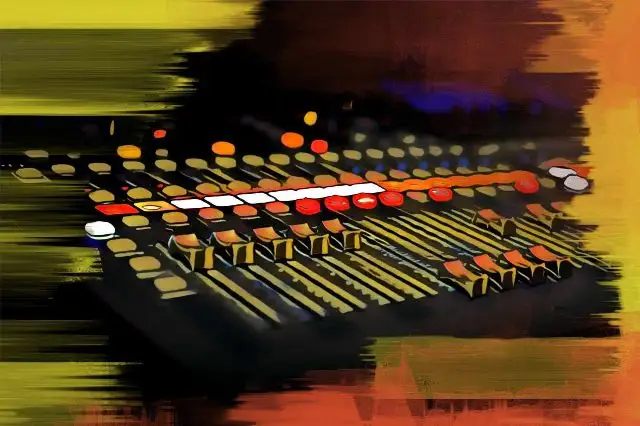Running back your newly recorded tracks only to find that they're distorted is never a good feeling. While it's always best to re-record audio files with baked in distortion, this method is not always viable or convenient, especially when you've recorded multiple sources.
Fortunately, there are a couple of methods you can try within audio editing software for a quick clip fix. We'll walk you through how to repair a distorted audio file as much as possible below and share key strategies to help you avoid distortion to begin with.
What Exactly Is Distortion?
Distortion is the deformation of audio. It can be caused due to several reasons including utilizing faulty equipment, an overload of sound within a specific frequency range, or levels being so high that they clip off and create a harsh sound as a result.
Distortion is often used in music production for artistic effects through plugin groups like compressors, saturators, and pure distortion plugins. Luckily, there are several ways to manage distortion which we'll discuss below.
Is it Possible to Fix Distorted Audio?
When going into music and sound software to remove distortion from audio, it's key to manage your expectations. Some AI or algorithmically-assisted plugins do quite an impressive job when it comes time to remove distorted audio. Still, in most cases, a re-recording of the damaged audio file will almost always be the superior choice.
This is because audio processing is additive. Every processing stage builds on the prior one. So if you bring in a distorted audio file, you can certainly reduce harsh frequencies and potentially bring some restoration to the audio signal with specialized plugins, but you might sacrifice some other auditory characteristics in the process. You can clean up a distorted audio waveform but in order to truly fix distorted audios, re-recording is your best bet.
How to Prevent Distortion In Audio
The best way to produce distortion-free audio is to avoid capturing badly distorted sound in the first place. Use these strategies to effectively keep out distortion from the get-go:
Optimize Your Signal to Noise Ratio
Starting with a clear signal chain is one of the best ways to remove audio distortion before it begins. When you optimize your signal to noise ratio , you're strengthening your sound source's signal and reducing unwanted noise through troubleshooting and other strategies. This could mean replacing faulty cables, reducing latency through upgrading your interface, investing in preamps, or any other process that produces a stronger signal from your sound source.
Gain Stage
Gain staging is essentially intentionally setting the proper levels for both analog and digital equipment from one stage of the music production process to the next. Hence, every piece of equipment should be set so that it does not cause clipping going into your DAW. In digital audio, the point of clipping is at or above 0 dB, whereas with hardware analog gear, the point may vary depending on the source.
Eliminate Background Noise
Make sure you're recording in as flat of an environment as possible with no background noise or obvious auditory distractions. You'll also want to avoid any spaces with natural echoes or reverb. While it might sound great on vocals, artificial reverb is much easier to control, and reflective spaces can open up the door to unwanted interference in your recordings. Background noise is less likely to distort your recording, but it can be just as tricky to remove from your recorded clips depending on what gets tracked.
Live Monitoring
Part of the reason why it's so important to keep an eye on your audio meters while recording is that doing so can help you avoid recording an overly hot signal that might clip during louder sections. Instruments and vocalists are naturally dynamic, so keeping an eye on your level meters while recording and running through a couple of test takes before hitting record is essential.
Multiple Takes and Recording Methods
Let's say you're tracking vocals. It's a good idea to have at least three or four good takes before ending a session. This practice is commonplace for a variety of reasons, but it can also save you in the vocal comp in the event that one take has a slightly clipped chorus. Other applications, like a podcast recording with multiple important guests, can be protected by recording the sound through multiple sources.
For instance, you might record audio on both Lavalier microphones as well as a standalone Zoom recorder. This way, if for whatever reason you don't catch the distorted audio in the moment, you'll have another take to pull from in the edit.
How to Remove Distortion From Audio
If you're in a tight spot where you have distorted audio files and re-recording is simply not an option, you can try out these strategies in any digital audio workstation (DAW) to cut back on distortion:
Level Balancing
It's possible that your audio file is simply too loud or at a level that naturally creates digital clipping or distortion. Before doing anything else to fix distortion in your audio file, turn down the level of the file itself to see if that makes a difference. Remember that any audio file over 0 dB digitally will have some level of distortion.
A.I Assisted Plugins
Fortunately, the development of A.I. assisted plugins and technology is only making it easier to accurately repair distorted audio whenever you're in a pinch. For example, removing vocals from a song with high precision used to be a cumbersome task until the recent past, but not anymore.
Use An EQ
In many cases, you'll find that distortion from audio is targeted around a certain frequency range and therefore may not affect the whole audio signal. You can use an EQ in this case to lessen the blow of the problem areas, reducing the impact wherever distortion is clearly present. While you're likely to notice an immediate difference in your repaired file, the trade-off is that you'll likely eliminate positive frequencies in the process. Tread lightly with your EQ to keep your recording as full as possible.
Noise Reduction Tools
Most traditional music DAWs like ProTools have some sort of audio restoration add-ons or stock plugins that can help with the process. More generalized audio suites like Audacity, Adobe's Audition, and even podcast-focused tools like Descript also have audio settings designed to de hum, de reverb, and lessen the harshness of distortion built into the suite.

Removing Audio Distortion FAQs
Restoring the original sound from a damaged file can be downright difficult. Consider these commonly asked questions and answers to help you remove audio distortion from your session:
Why is my audio distorted?
Distortion can be caused by many things not limited to improper gain staging, poor microphone placement, faulty equipment or cables, or source audio coming in at a level that's much louder than it needs to be. Learning proper recording techniques and etiquette can help you avoid distortion altogether.
How do I make distorted audio clear?
Some specialized plugins will help you apply audio restoration to your sound file. You can also use strategies like selective compression and equalization to clean up your audio track. However, the best way to get a crystal clear recording is to re-record the sound altogether.
How do you remove distortion from sound?
Depending on the conditions of your audio, it might be impossible to fully remove distortion from your clip. However, you can use specialized audio restoration plugins and basic editing techniques to help you clean up your distorted audio files considerably.
How do you fix speaker distorted sound?
Distorted audio from speakers could be due to an equipment issue or the level of the audio. Test several genres of music at a low volume level, and if your speaker is still making a crackling sound or producing distortion, it likely needs to go in for professional repair.
These management strategies are here to help you make the most of a challenging situation. Again, if you want to completely eliminate distortion, your best bet is not to introduce distortion in the first place, but of course that is easier said than done. Hopefully, this guide gave you some effective solutions to prevent and reduce distortion in your recordings.





